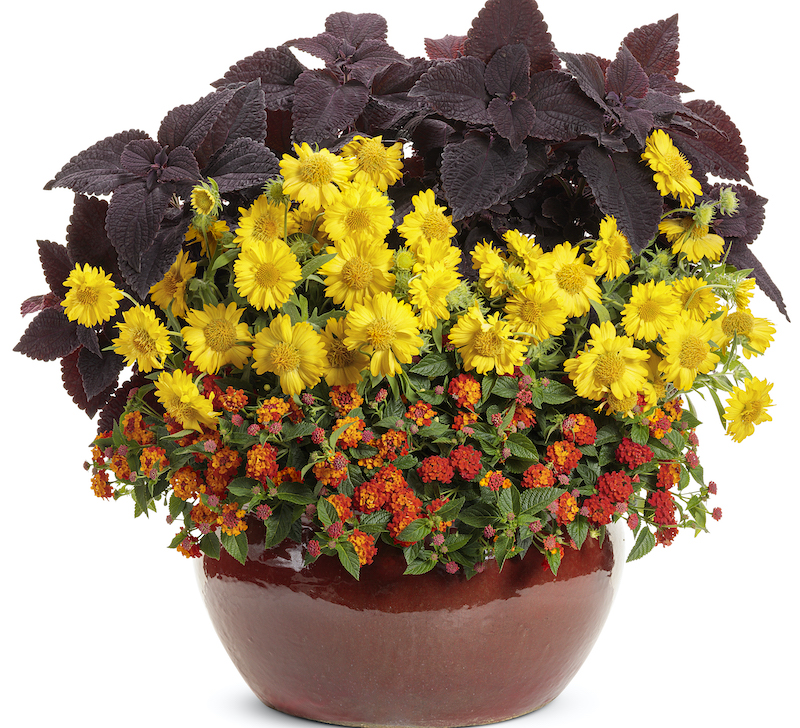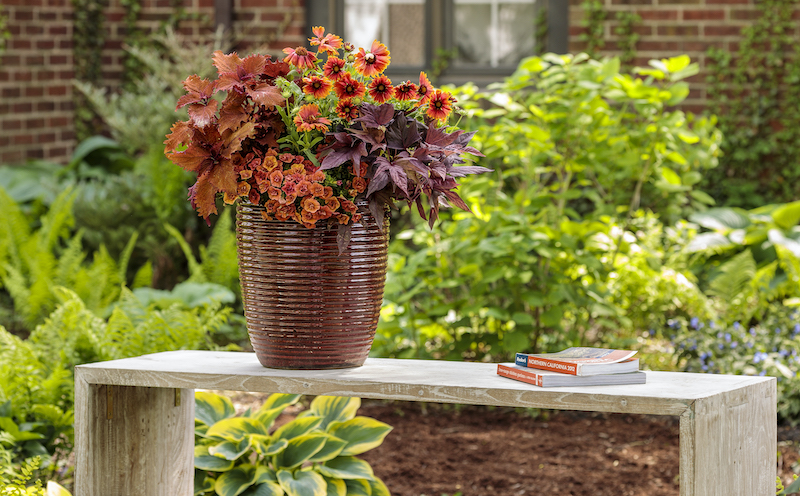Blanket Flowers are one of the best perennials for encouraging beneficial pollinators into your garden. They also have long-lasting flowers that make for a gorgeous display of bright and deep colors all through the summer. Planting Gaillardia in a container is a great way to dress up a patio or deck or add color to a seasonal container garden. They can be planted alone or with other summer-blooming plants making for an almost effortless display.

Planting Blanket Flowers in Pots
Blanket Flowers perform best when they are planted early in the spring. The cool weather will give this plant plenty of time to establish a strong root system. Plant up pots of Blanket Flower early in the day to lessen the effects of transplant shock. Plants that have been previously grown in the ground can be divided and easily transplanted into containers for one or more seasons. Always ensure that any container has sufficient drainage, allowing good air circulation around the Blanket Flowers roots. Blanket Flowers do not like standing in water for any amount of time and are easily prone to root rot disease. When considering plants for a mixed planting, research the needs of each plant and make sure they are compatible. Plants that like full sun and soil on the dry side will sulk when planted in a shady, damp container with ferns and hostas.

Best Soil For Blanket Flower in Pots
All-purpose potting soil is ideal and easy to use. Avoid any mixes that have added fertilizers. Blanket Flower rarely needs fertilizer and blooms best in poor, loose soil with little nutrition. Adding perlite or horticultural grit (often sold as poultry grit) to the potting mix will improve drainage and protect the plant from overwatering. The grit can also be used as a top-dressing after planting the container.
Caring For Blanket Flowers in Planters
Caring for perennials in containers is no different than growing annuals. Annuals will die at the end of the season, and perennials will go dormant in the winter in most growing zones and will regrow the next spring. Perennials can be grown for many years in the same container. You can also plant them in the garden after a few years or grow them as an annual and discard them in the compost heap after the first frost in fall.

Watering Blanket Flowers in Pots
Even drought-tolerant plants like Blanket Flower need regular watering when growing in a container. The soil dries out much faster than the soil in a garden bed. Mulching the top of a container with small decorative rocks, finely shredded arborist chips, or even marbles will help keep the soil cool and retain moisture longer, as well as add interest to the design. Blanket Flower pots can be allowed to dry out between waterings. Water when the top 3-4 inches of soil are dry to the touch, soaking the container well to saturate all of the potting mix. Water should drain freely from the bottom of the container.
Fertilizing Blanket Flower in Pots
Blanket Flowers are a great low-maintenance plant that does not normally require supplemental fertilizing. In fact, fertilizing does not increase blooming and results in thick foliage growth with sparse flower buds. Refreshing the potting soil each year is the only boost that Blanket Flowers need to remain robust and thriving.
Winter Care For Blanket Flowers in Pots
Blanket Flowers are very hardy and take little care to survive winters in USDA growing zones 3-10. In fact, in the warmer growing areas, Blanket Flower stays semi-evergreen and makes a great wintertime ground cover. The main enemy of Blanket Flowers in winter is excessive moisture, which can lead to rot. Make sure the container has good drainage, and move it onto bricks or dedicated ‘pot feet’ to allow water to fully drain. Blanket Flowers will need watering through the fall, as long as the temperature is above 50 degrees. Soil stays moist longer in cool weather, but during a dry spell, watering will be necessary.
Growing Blanket Flowers Indoors
Blanket Flower is such a hardy plant, there is little need to grow it indoors to overwinter. During the winter, it often goes dormant and has little interest to offer. Seeds can be started late in the winter and should be grown indoors until after the last frost of spring. New seedlings will need bright light and warm conditions to grow properly. Use heat mats to start the seeds and then place seedlings under grow lights for at least 12 hours a day. The seedlings will need a period of hardening off before planting in the garden or a planter for the season.
 |
Author Robbin Small - Published 3-11-2023 |
